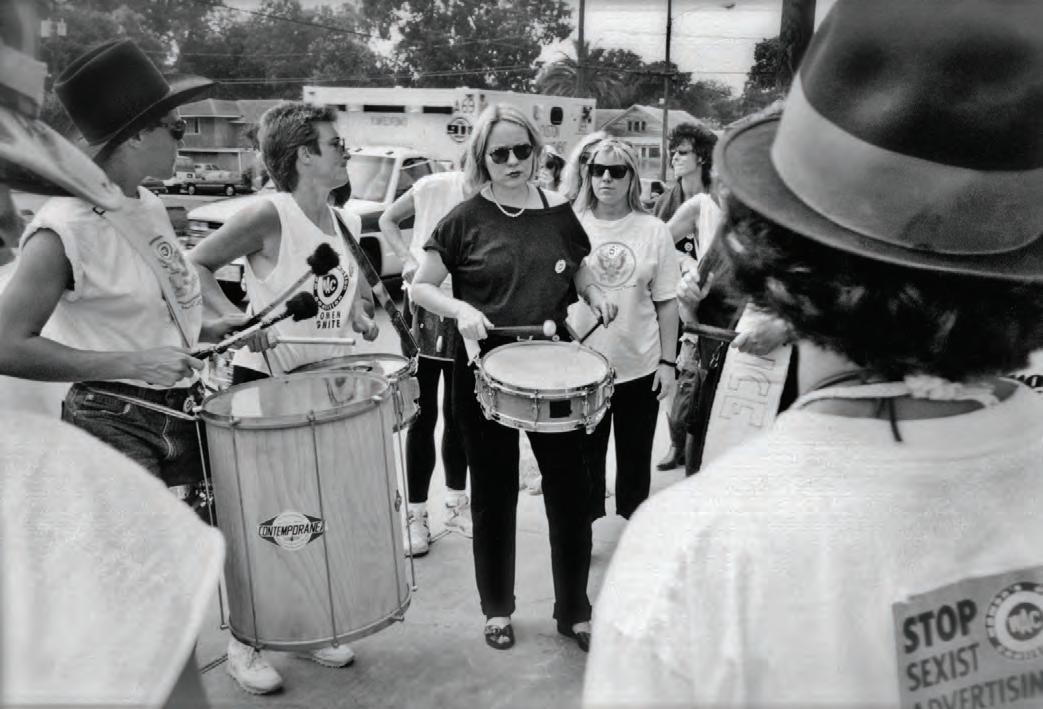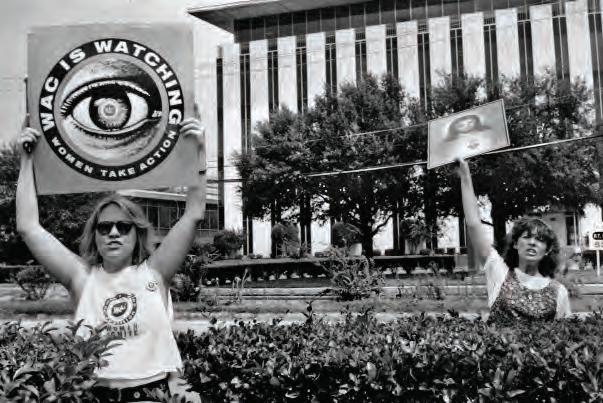
3 minute read
The Drum Corps (1992
WAC is Watching—We Will Take Action THE DRUM CORPS (1992)
100
SARAH As a young artist, I felt like I was entering a territory that had been primarily owned by men in previous generations, with a few exceptions. I had a book called The Artist in His Studio. It was photographs by Alexander Liberman. I remember turning the pages and seeing Mondrian and the skinny guys in his studio and Picasso in his underpants and, Calder and Miró, and on and on. I’d turn these pages and I’d look at these artists in their studios—his studio. And I’d just get blue. I didn’t know why. It took me years to go, “Wait a minute.” I was looking for a role model. I had no idea that there weren’t women artists. There were, like, two of them. There was Georgia O’Keeffe and Agnes Martin. The art world in those days was guys, guys, guys, guys. Every art gallery was filled with guys, guys, guys, guys.
MATTHEW C. LANGE It is important to note the degree of recognition that she did receive in the ’70s and ’80s—it was a big deal that women should get just as much or more than men. She did a lot to make sure that they did. She promoted women artists, she fought for women artists. That was big for her. It was important for her and there was a sisterly approach to making work.
SUSAN INGLETT When I think of what her generation did for women in the arts and in the larger world, she is a remarkable figure. She has had an impact on younger artists today who have a lot of respect for her. Given what Sarah had to push against, she had to be intellectually rigorous and demanding—she had to do her homework to be taken seriously.
KATE LINKER WAC was born out of a sense of great urgency, and it became a very powerful group that was, for a brief time, a huge force in the art community. Women were examining their identity as women—their needs and their rights in the home and in the workplace. In this context, Sarah was stunning. She looked at this group and recognized that it was made up of truly cool women who were asserting their right to define their own identity and their own conditions of existence. WAC was largely formed of professional women who were demanding the kind of recognition for their work that had not been available to previous generations of women. The Drum Corps was by far the coolest group in WAC. In marches, they were the leaders, right at the head of the whole, huge, moving contingent. Sarah thought she would give it a try—and then she got so involved that she drummed the whole route, all the way down Fifth Avenue from the Metropolitan Museum to Eighth Street. She loved every minute.
ROMY CHARLESWORTH Nancy and I thought, “Oh yeah? Really?” We raised our eyebrows because she wasn’t into rhythm and music. Sarah had no rhythm at all. I think she really got into the power of the pure percussion. She kept her drum on the wall at the foot of her bed like a sacred symbol.
JUDY HUDSON It was time. It had an energy that the 60s did. Sarah was almost crazy when she was drumming.
LAURIE SIMMONS I thought it was phenomenal. I thought it was great. Sarah did get carried away, but in the very best way.

The Women’s Action Coalition.
101










